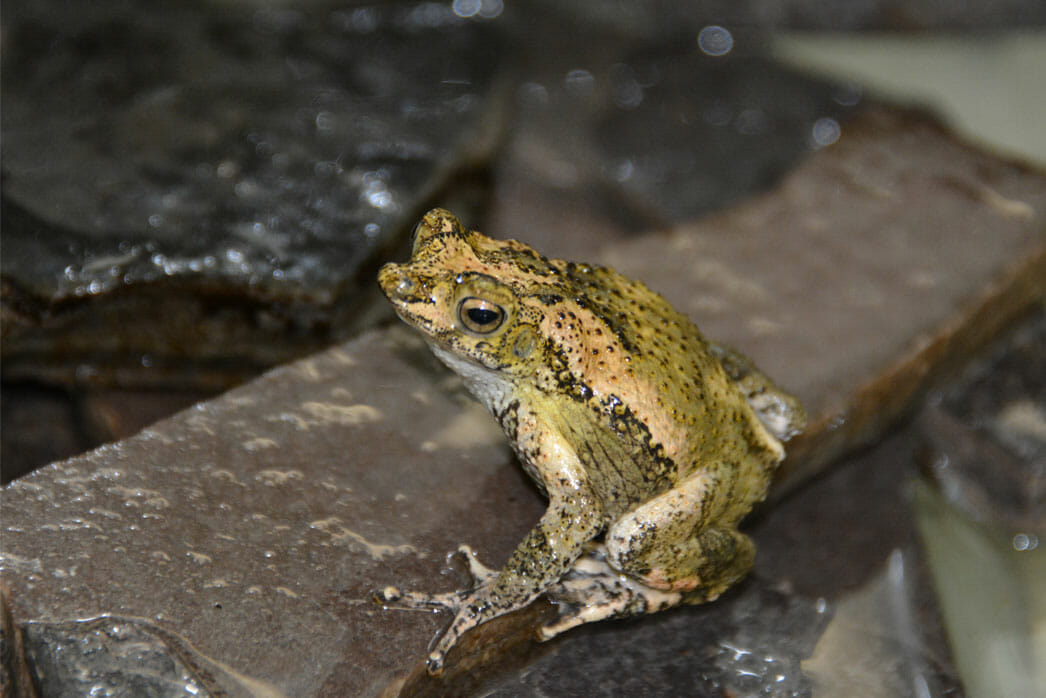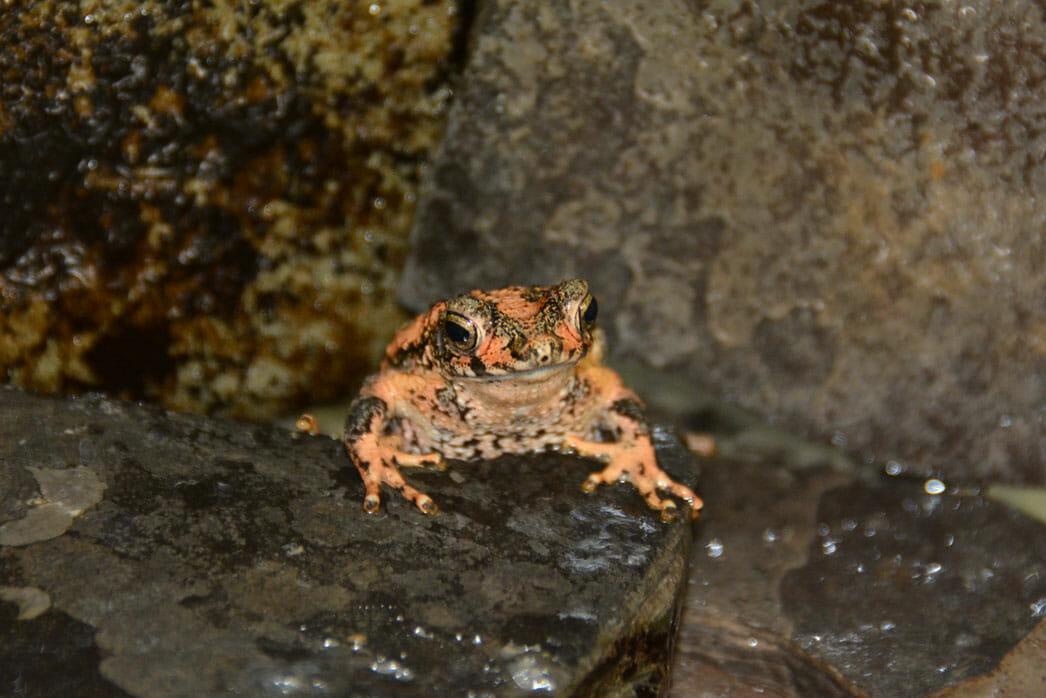Puerto Rican crested toad
Peltophryne lemur
At the Detroit Zoo
The Detroit Zoological Society has been working to preserve this critically endangered species since 1995 through a cooperative breeding program. In May 2015, a record-breaking 22,571 tadpoles were sent to Cabo Rojo, Puerto Rico for release into the wild while 20 remained at the Zoo for future breeding efforts. In 2018, 11,226 tadpoles were sent to Puerto Rico’s El Tallonal biological reserve for release into the wild after another successful breeding season. In 2019, we released 7,809 more in El Tallonal. The Puerto Rican crested toad can be seen at the award-winning National Amphibian Conservation Center – a leader in amphibian conservation and research – which houses a spectacular diversity of frogs, toads, salamanders, newts and caecilians.
This nocturnal amphibian is generally well-hidden, but its large eyeballs and pointy hooked nose can be seen peering out from under its limestone home. It can almost completely flatten its body to fit into tiny crevices in its habitat.
Description
Female Puerto Rican crested toads are typically a dull brown color, though some have pinkish-colored sides. The males tend to be olive green and gold, though some have yellow-colored sides. Both sexes have marbled, golden eyes and textured, pebbled skin, but the female’s are much rougher. Another difference is that the females have a high crest above their eyes while the males have pads on their thumbs.
Fun Facts
-
Tiny radio transmitter "backpacks" have been placed on some of these toads by researchers to track their movements.
-
Puerto Rican crested toads were the first amphibian involved in a Species Survival Plan – a comprehensive management plan through the Association of Zoos & Aquariums that works to ensure the sustainability of healthy, genetically diverse and demographically varied captive animal populations.
-
It only takes 18 days for eggs to grow into toadlets.







